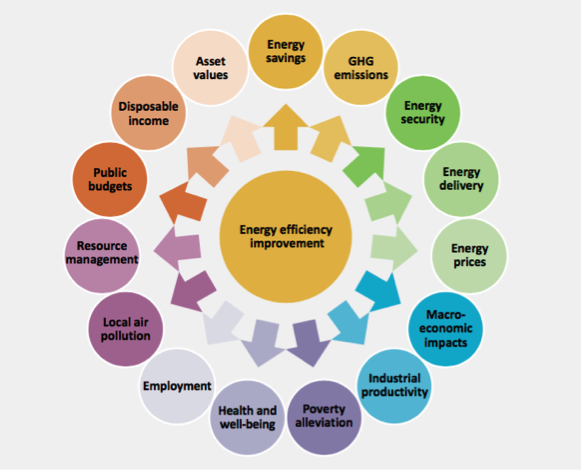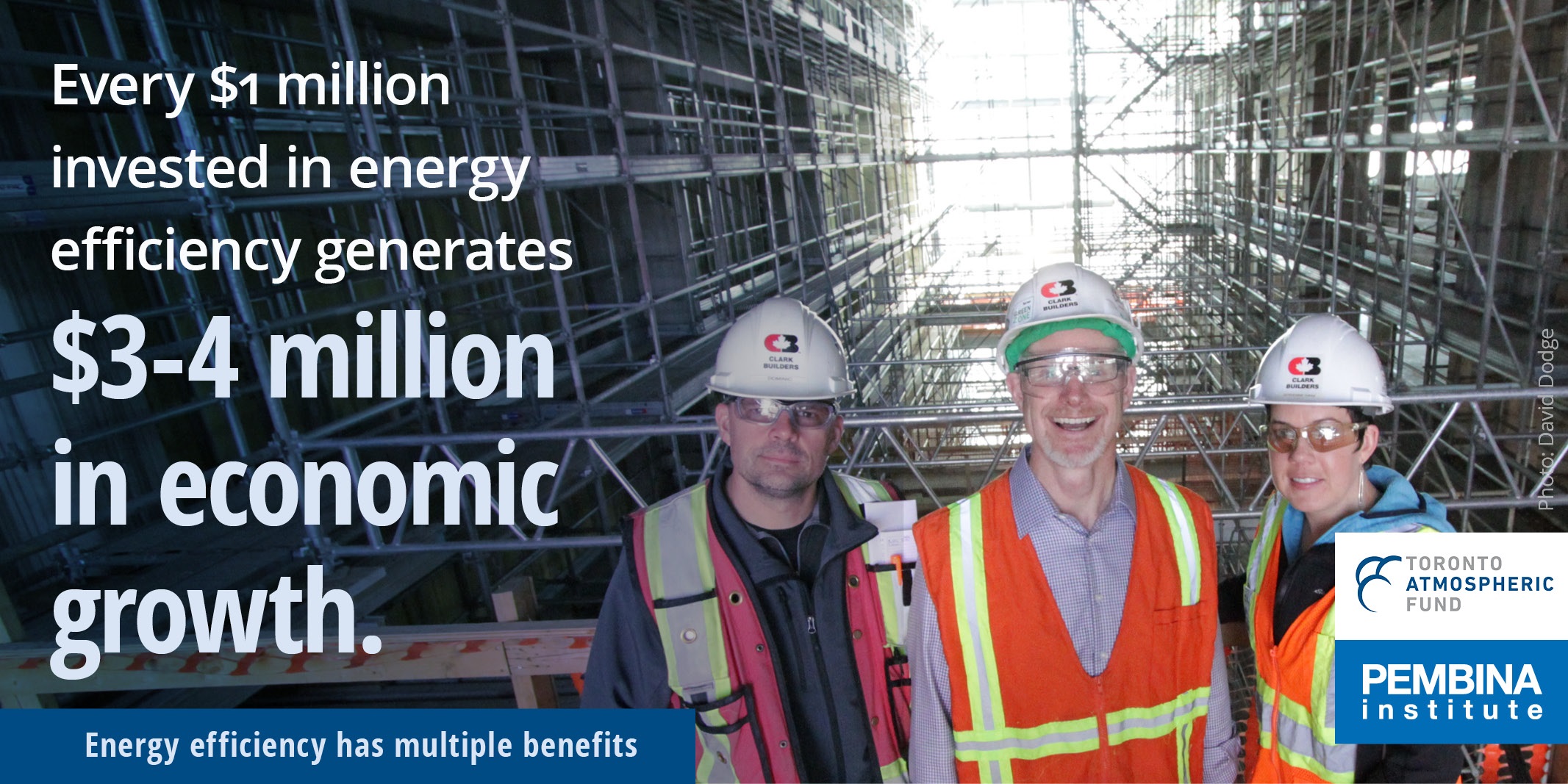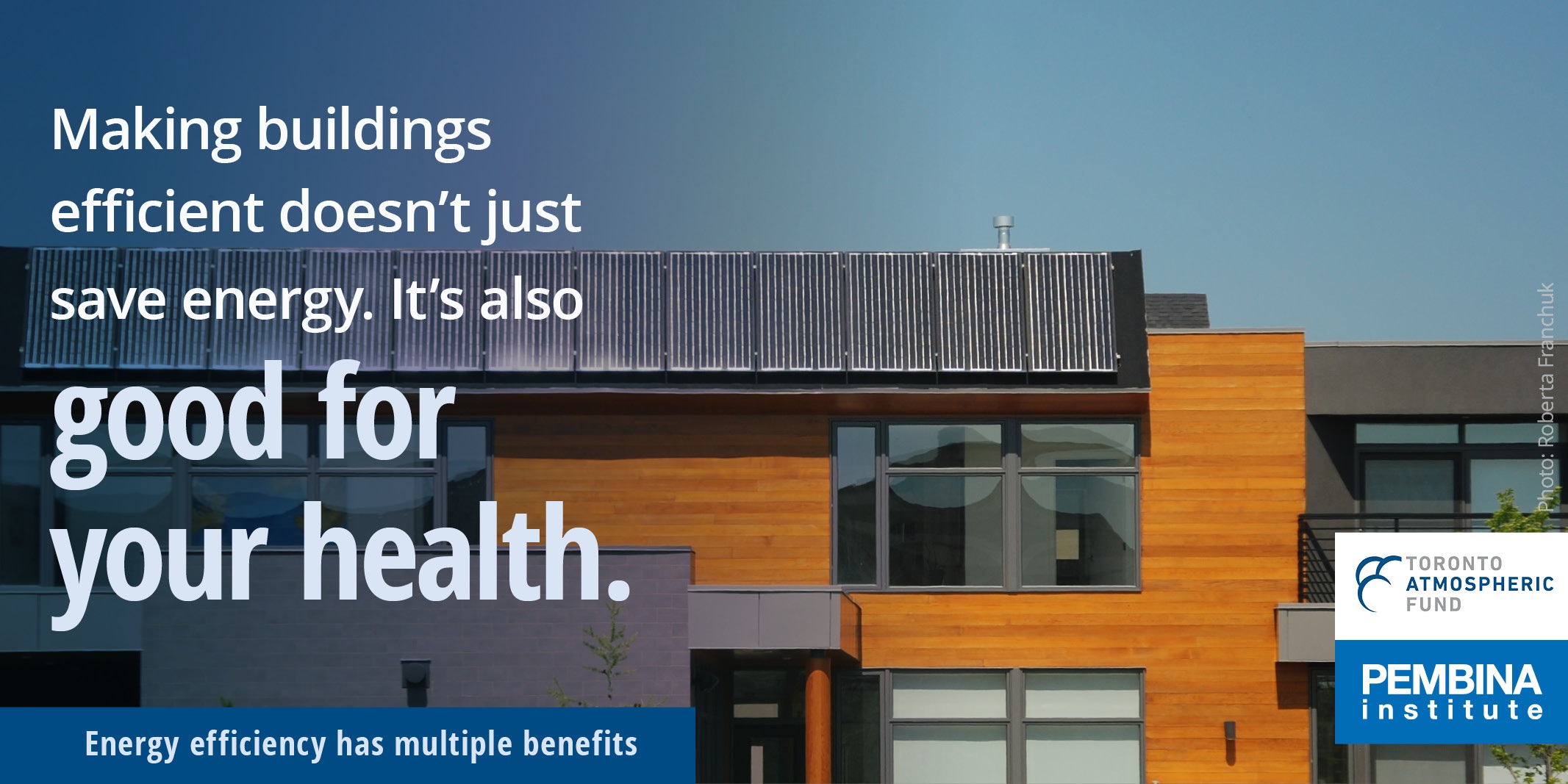Transforming the built environment = investing in prosperous, healthy and equitable communities
Joint blog by Vivian Chung, policy research and engagement coordinator at TAF and guest blogger Dylan Heerema, analyst with the buildings and urban solutions program at the Pembina Institute in Vancouver.
There is growing recognition across the country of the importance of buildings and energy efficiency to combatting climate change and meeting our commitments under the Paris Agreement. Because nearly a quarter of Canada’s carbon emissions are linked to homes and buildings, improving the energy efficiency of our built environment is one of the federal government’s key action areas for climate action.
In response to this momentum, 11 key players in the energy and building sectors, including Toronto Atmospheric Fund and the Pembina Institute, wrote to the federal government this month asking for bold action on Canada’s buildings. In our recommendations, we laid out an ambitious plan to transform the built environment to be ultra efficient and low carbon, meeting our global commitments while fostering economic and job growth.
The building sector represents the best value in climate-change mitigation, with improvements costing less and providing a greater return than those in other sectors, according to the World Resources Institute. These improvements can represent a significant step forward in terms of emissions reductions, at little additional cost.
But what are the benefits of efficiency beyond carbon? What is the impact on our communities?

The spectrum of co-benefits resulting from energy-efficiency improvements reaches far beyond reducing carbon emissions. Source: International Energy Agency, Capturing the Multiple Benefits of Energy Efficiency (2014)
The full benefits of energy efficiency
The benefits of reducing energy consumption are clear when considering reducing emissions. But energy efficiency is much more than just a measure to combat climate change and reduce utility bills.
Some of these benefits are more obvious. An energy-efficient building is, by design, a building that lasts longer, performs better, costs less to run, and requires less maintenance. Less known — but arguably more impactful — are the societal benefits to prosperity, health and equity. Canadians stand to benefit greatly, both at the societal and individual levels, from investments in energy efficiency.
Prosperity
Investment in energy efficiency creates new jobs and stimulates economic growth. According to a comprehensive economic modelling study by the Acadia Center, every $1 million spent on energy efficiency results in $3 million to $4 million of GDP growth and 22 to 27 new person-years of employment. Investments in energy-efficiency projects directly create demand for the required products, services and labour. However, this direct impact is only the tip of the iceberg. Most of the long-term economic impact comes from the resulting utility cost savings, which are recycled by consumers and businesses elsewhere in the economy.
Lower energy costs increase disposable income for consumers and improve the productivity and competitiveness of businesses. Moreover, all of this additional economic activity enhances government tax revenue, more than offsetting the cost of energy-efficiency programs. The Acadia Center estimates that aggressive investment in energy efficiency could generate as many as 304,000 jobs and $48 billion in GDP annually.

Health and well-being
Canadians spend 90 per cent of their lives indoors. As such, it should be no surprise that the quality of our indoor environments can have a major impact on our health and well-being. Replacing leaky windows or poor insulation doesn’t just save energy; it can also mitigate a host of related health and comfort problems due to cold air drafts, moisture and mould.
Better indoor environments are correlated with improved comfort, productivity and well-being. Symptoms of respiratory and cardiovascular conditions, rheumatism, arthritis and allergies can potentially be reduced through improved ventilation systems and airtightness, both in new construction and in existing buildings. These impacts are not insignificant. In fact, several studies found that health benefits could represent up to 75 per cent of the overall benefits of energy-efficiency retrofits.

Equity
Energy is a critical necessity, fuelling our homes and lives. Fuel poverty occurs when the cost of basic energy needs become a substantial burden on consumers. At least one million Canadians are affected by fuel poverty, spending more than a tenth of their income on energy. Fuel poverty perpetuates social inequality because it occurs at the nexus of low income, poor housing quality, and high, unpredictable energy costs. Energy efficiency provides an opportunity to shrink the equity gap by prioritizing efficiency investments in low-income and social housing.
Social and low-income housing is often the most vulnerable to drafts, condensation and mould, among other issues affecting liveability. A better-performing building can largely address these issues and reduce energy bills at the same time, doubling the benefit to low-income households.
Transforming our communities
Energy efficiency helps pave the way to a transformative vision of Canada, one based on sustainable energy systems and healthy and prosperous communities. In this vision, energy-efficient buildings become a centrepiece of sustainability for the community. The cost savings and improvement in indoor environmental quality that flow from these buildings will enhance the standard of living of community members.
Buildings last far longer than most other products, including cars, power plants and appliances. An investment in a high-performing building has benefits years into the future. Conversely, an inefficient, poorly performing building will continue to perform poorly for 50 years or more. By investing in building energy efficiency now, we can “lock-in” the benefits and begin the transformation to a sustainable, prosperous and low-carbon economy.
Awareness of these multiple benefits in the building sector is growing. While more research is needed to understand the extent of these benefits and how to maximize them, we know enough to justify taking action now. We need to shift public and policy-makers’ perceptions of energy efficiency — from an obligation to address climate change, to an opportunity to enhance prosperity, health and equity across Canada.
Vivian Chung is the policy research and engagement coordinator at Toronto Atmospheric Fund.
Dylan Heerema is an analyst with the buildings and urban solutions program at the Pembina Institute in Vancouver.

